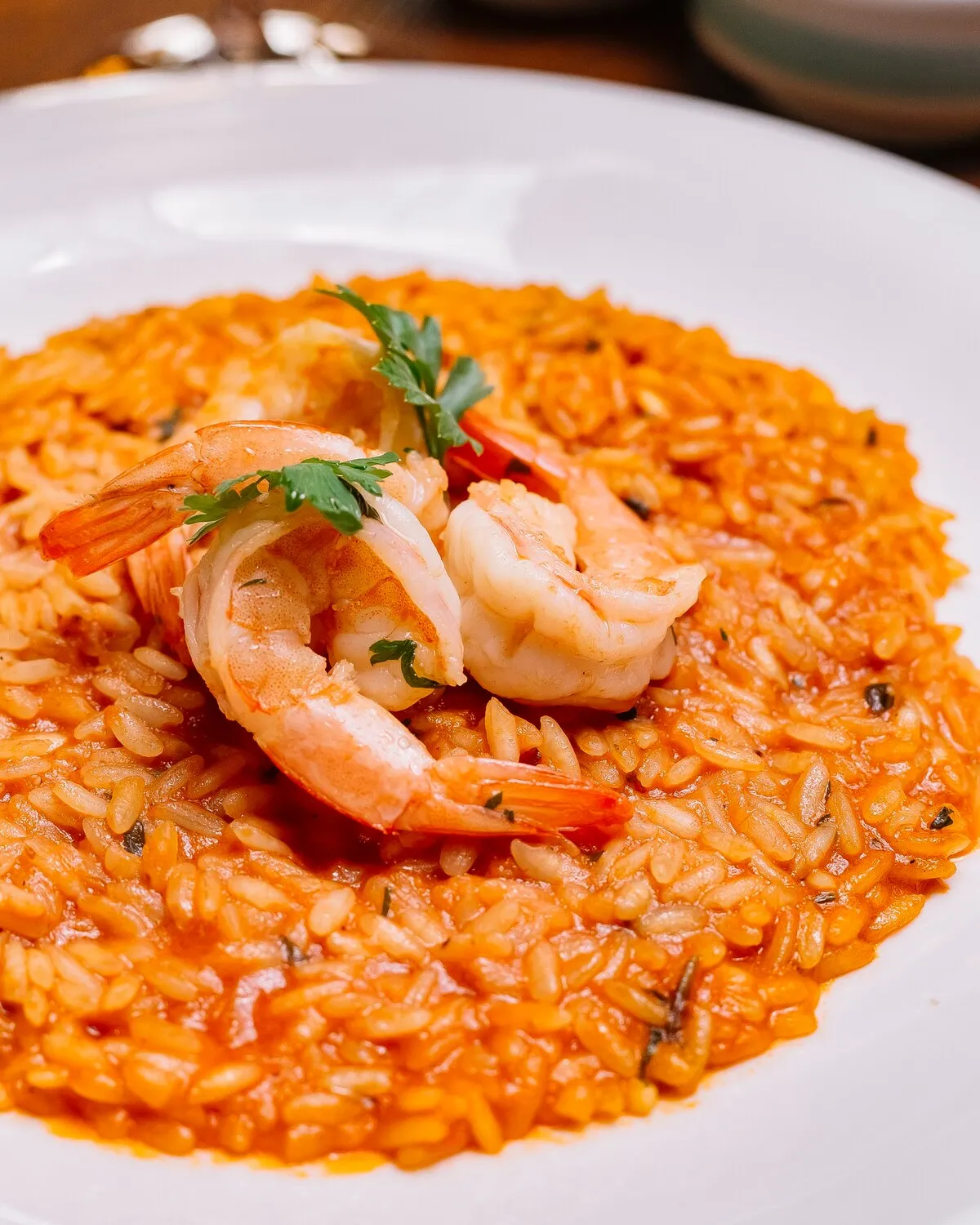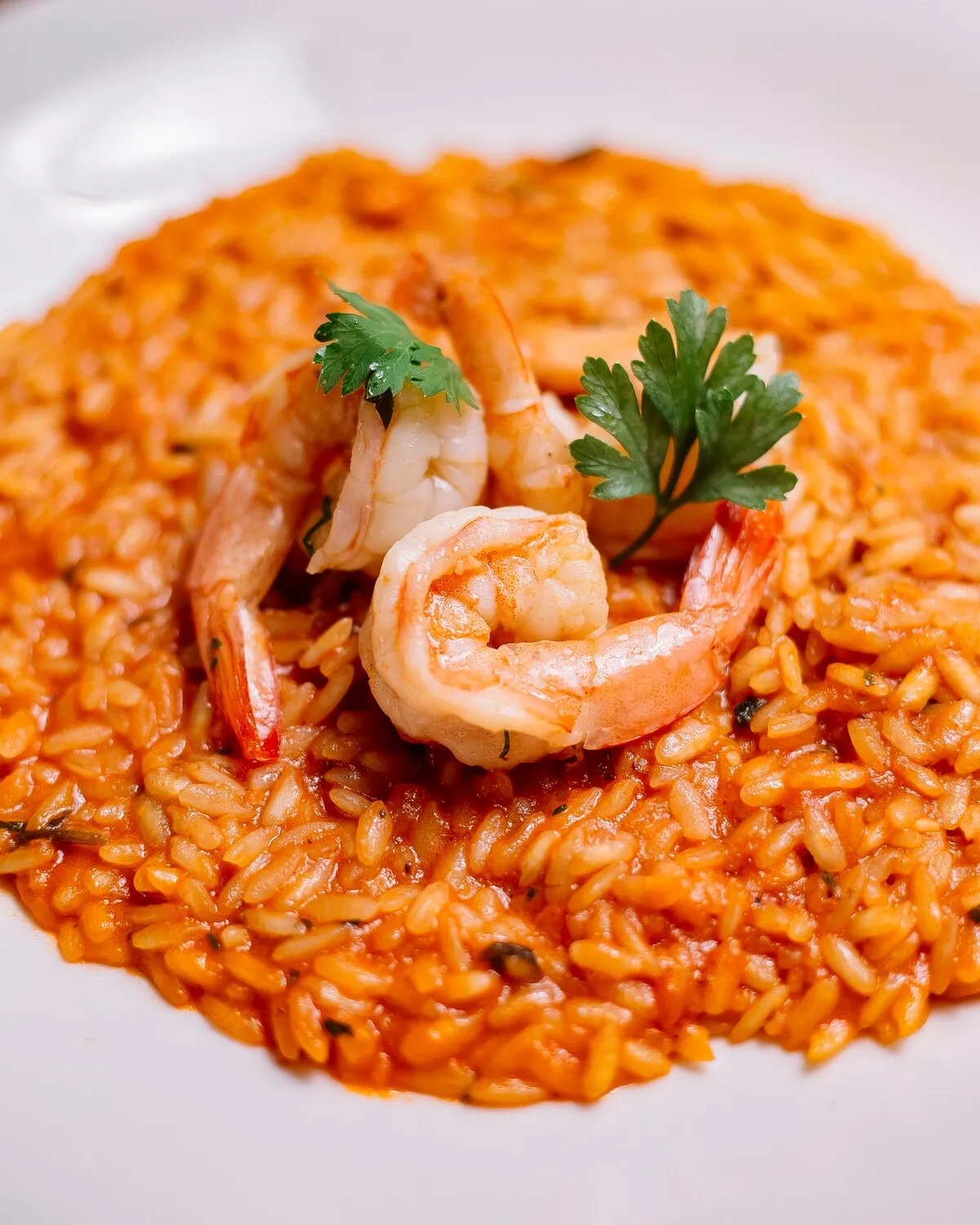
Risotto
Risotto is also available.
Nutrition Facts
* The % Daily Value (DV) tells you how much a nutrient in a serving of food contributes to a daily diet. 2,000 calories a day is used for general nutrition advice.
TATTI
Risotto's origins can be traced back to Northern Italy, specifically the Po Valley region known for its rice cultivation. Arab influence in Spain and Sicily, with their knowledge of rice cultivation, played a crucial role in introducing rice to Italy. Initially, rice was used primarily in soups and desserts. The development of risotto as a distinct dish occurred gradually over centuries, with key advancements in rice varieties and cooking techniques.
Risotto is more than just a dish in Italy; it's a symbol of Italian culinary tradition, patience, and craftsmanship. It represents a celebration of fresh, seasonal ingredients and a slow, deliberate cooking process, often enjoyed as a first course (primo) at special gatherings.
Regional Variations
Risotto recipes vary significantly from region to region in Italy, reflecting the local produce and culinary preferences. For instance, saffron risotto is a classic Milanese specialty, while risotto with radicchio is popular in the Veneto region.
Family Traditions
Making risotto is often a family tradition, passed down through generations. Each family may have their own unique techniques and secret ingredients, contributing to the dish's cultural significance.
Symbol of Hospitality
Serving risotto is often seen as an act of hospitality and generosity. It requires time and attention to prepare, making it a thoughtful dish to share with guests.
Risotto is characterized by its creamy texture and rich, savory flavors. The base is typically infused with aromatic ingredients like onions, garlic, and wine, while the final flavor profile is heavily influenced by the additions, such as mushrooms, seafood, vegetables, or cheese.
The foundational flavors of risotto come from the Arborio or Carnaroli rice, which are cooked slowly with broth, allowing the starch to release and create a creamy consistency. Butter and Parmesan cheese are frequently added to enrich the texture and flavor. The specific flavor nuances depend on the added ingredients. For example, mushroom risotto features earthy and umami notes, while seafood risotto boasts a briny and oceanic flavor.
Rice Selection
Use Arborio or Carnaroli rice for the best results. These varieties have a high starch content, which is essential for achieving the creamy texture characteristic of risotto. Vialone Nano is another good option.
Broth Temperature
Keep the broth hot throughout the cooking process. Adding cold broth can lower the temperature of the rice and prevent it from cooking evenly.
Stirring Technique
Stir the risotto frequently, but not constantly. This helps to release the starch and prevent the rice from sticking to the bottom of the pan. A gentle, consistent stirring motion is ideal.
Broth Addition
Add the broth gradually, about one ladleful at a time. Allow the rice to absorb the broth before adding more. This ensures that the risotto cooks evenly and develops a creamy texture.
Mantacare
At the end of cooking, vigorously stir in butter and parmesan cheese. This final step, called 'mantecare,' emulsifies the mixture, creating a luscious, creamy texture.
Explore additional Risotto dishes and restaurants
Explore RisottoDiscover top dining spots and culinary experiences in Stuttgart.
Explore StuttgartLearn more about the food culture, restaurant scene, and culinary heritage of Germany.
Explore Germany
